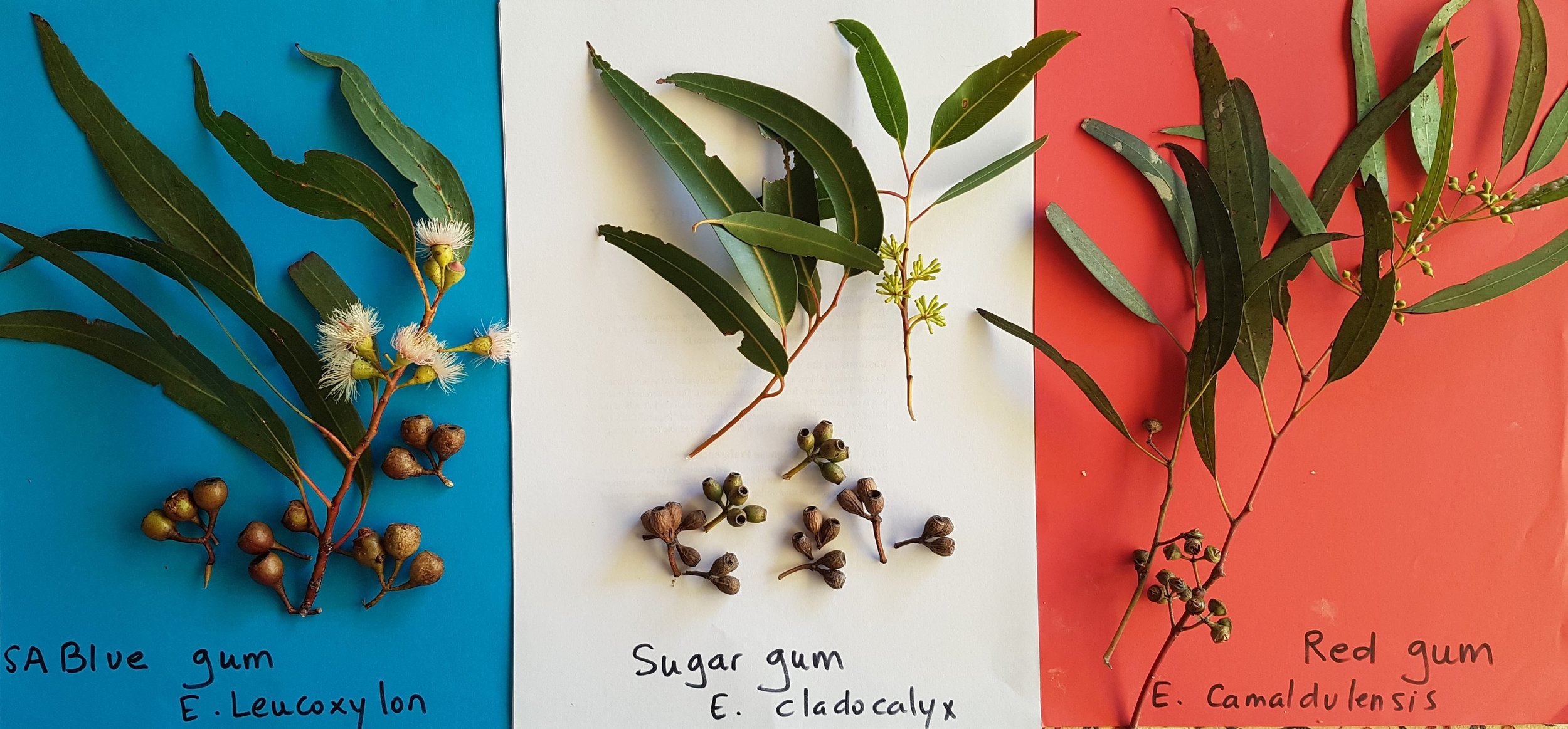by Juliet Bodycomb
The river red gum (Eucalyptus camaldulensis) is an iconic Australian species, widely distributed throughout the country.
It can be found in many of your Open, Green, Public parks, especially those that hug the River Torrens / Karrawirra Parri — including the appropriately named Red Gum Park / Karrawirra (Park 12).
A red gum alongside the River Torrens/ Karrawirra Park in Mistletoe Park / Tainmuntilla (Park 11)
River red gums have also become established in many other countries around the world.
A river red gum can grow up to 45 metres tall and have a canopy that sometimes equals its height, with a trunk circumference of up to 11 metres, and a diameter of up to three metres.
A large river red gum in the Adelaide Botanic Garden (Park 11). Photo: SamBiology on iNaturalist.
River red gums are ecosystem engineers – organisms that create and maintain habitats for many other species and modulate the availability of resources.
River red gums provide habitat and food for birds, insects and other wildlife, contribute to carbon and nutrient cycles in terrestrial and aquatic food webs, reduce soil temperatures and retain soil moisture, and lower the water table in water-logged areas.
Sulphur-crested cockatoo nesting in a river red gum. Photo: ParrotOfTheDay on X.
Found along rivers, creeks and floodplains, river red gums thrive near freshwater. When flooding occurs, they alter their mechanisms of water absorption.
During a flood, the trees produce more roots closer to the surface, allowing them to increase their root mass before the peak growth period in spring.
When the inevitable drought period returns, river red gums harness various mechanisms to prevent desiccation (water loss).
For example, they reduce transpiration through their leaves by closing their stomates (leaf pores) and shedding their leaves, and adjust their transpiration rates to match the ebbs and flows of annual flood cycles.
River red gums along the edge of Botanic Creek in Victoria Park / Pakapakanthi (Park 16)
River red gums are sometimes confused with South Australian blue gums (Eucalyptus leucoxylon) or sugar gums (Eucalyptus cladocalyx). The three are distinguished, however, by their leaves and flower buds.
River red gums have small, pointed buds, in clusters of seven to 11.
Blue gum buds, in contrast, are cone-shaped and occur in clusters of three.
Sugar gums buds are also larger than those of the red gum.
Image: Charlotte Hy.
Want to know more about the plants in your Park Lands? Head over to iNaturalist where you can record, share and discuss your findings with fellow naturalists.
See the other plants featured in this series here.
https://www.adelaide-parklands.asn.au/know-your-park-lands-plants
Red hot poker plants and a 130-year-old river red gum in Pennington Gardens West, part of Tarntanya Wama (Park 26).
Main photo: River red gums alongside the South Park Lands Creek in Carriageway Park / Tuthangga (Park 17)
***
Juliet Bodycomb is a biodiversity and conservation student at Flinders University and science writer for the Adelaide Park Lands Association and the Biological Society of South Australia.
She has an academic background in anthropology and is the recipient of the Australian Government's prestigious New Colombo Plan 2024 Scholarship, which will see her moving to Fiji to continue her studies in conservation biology and intern with multiple environmental organisations.
In her free time, Juliet enjoys hiking, reading, writing, and adventuring with her two border collies.










